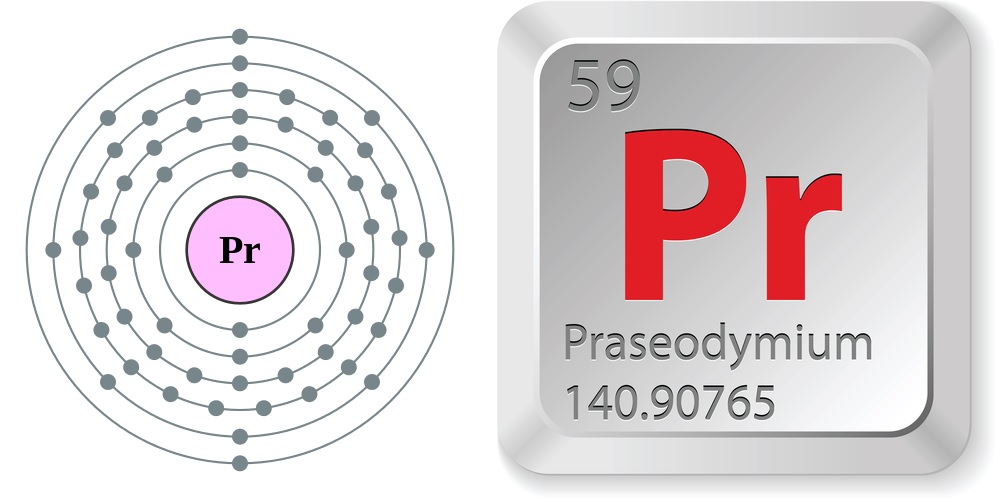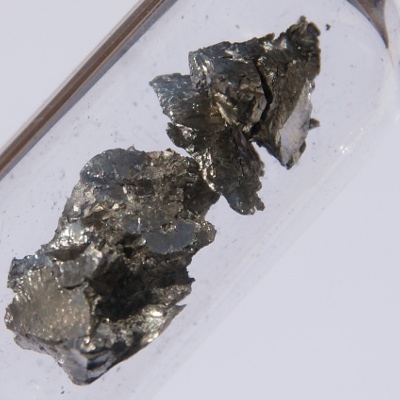Facts About Praseodymium

Word origin: Praseodymium comes from the Greek word prasios, meaning green, and didymos, meaning twin. The name combined means green twin.
Discovery: Swedish chemist Carl Gustav Mosander in 1841 extracted the rare earth oxide residue he called didymium from a residue he called "lantana." In 1885, Austrian chemist Baron Carl Auer von Welsbach separated didymium into two salts of different colors, which he named praseodymium, named for its green color, and neodymium.

Properties of praseodymium
Praseodymium is a silvery rare-earth metal that is soft, malleable and ductile. It is one of the lanthanides. [See Periodic Table of the Elements]
Although praseodymium is more resistant to corrosion in air than some other rare-earth metals, it can develop a green oxide coating when exposed to air.
Sources of praseodymium
Praseodymium can be found in a variety of minerals. Larger quantities of the element are found in monazite and bastnasite. New techniques, such as ion-exchange and solvent extraction, have led to easier isolation of many rare-earth elements. Praseodymium can also be obtained through calcium reduction of the anhydrous chloride of fluoride.
Get the world’s most fascinating discoveries delivered straight to your inbox.
Uses of praseodymium
Praseodymium is commonly used as an alloying agent with magnesium to create high-strength metals used in aircraft engines. It’s also a component of mischmetal, a material that is used to make flints for lighters, and in carbon arc lights, used in the motion picture industry for studio lighting and projector lights. The element is often added to fiber optic cables as a doping agent to help amplify a signal.
Praseodymium salts can give glasses and enamels a bright, true yellow color. Didymium glass, which contains praseodymium, is a colorant for welders and glass blower’s safety goggles.
(Source: Los Alamos National Laboratory)

